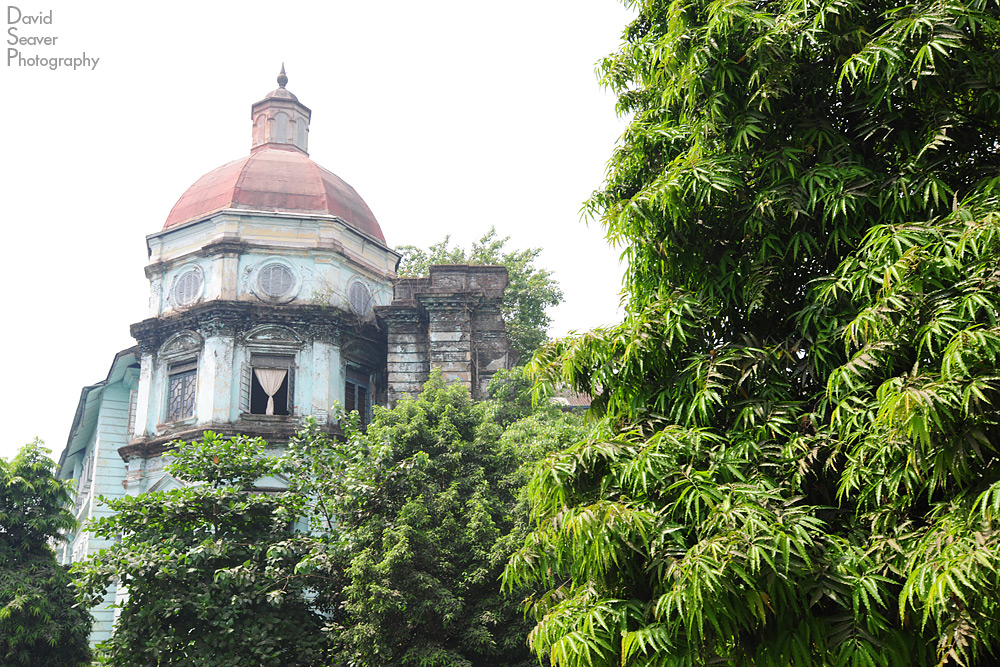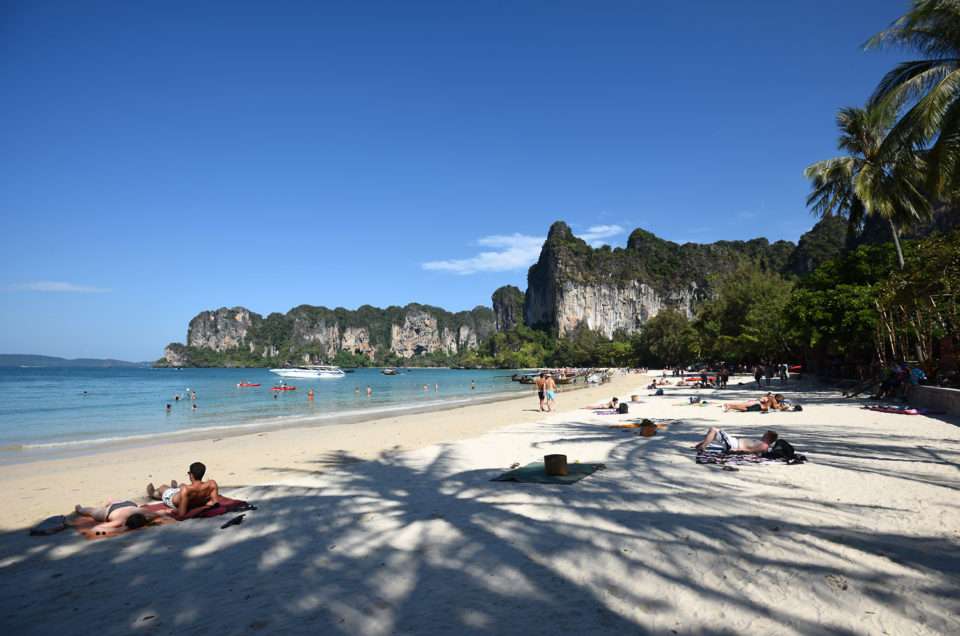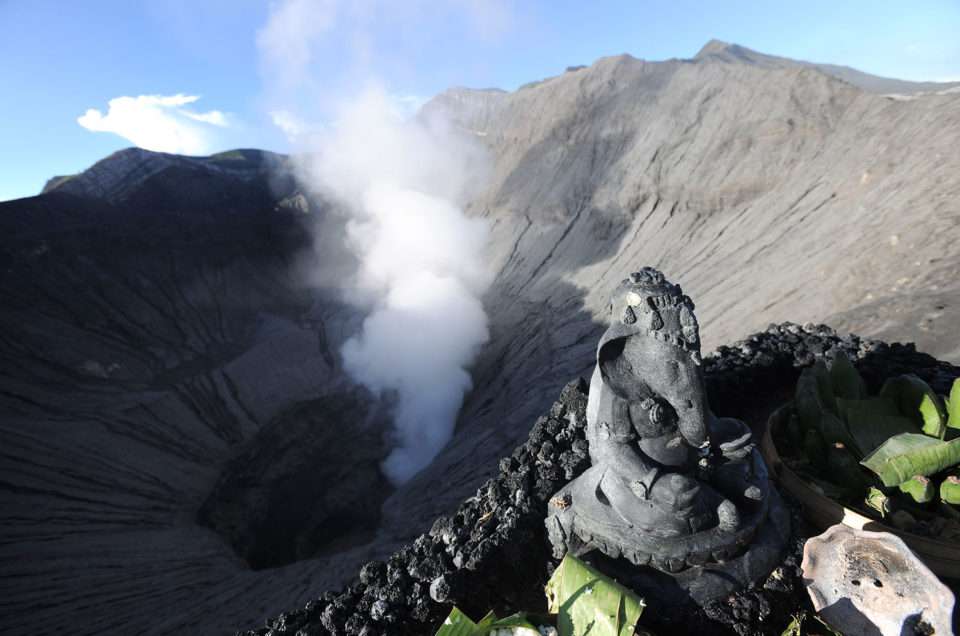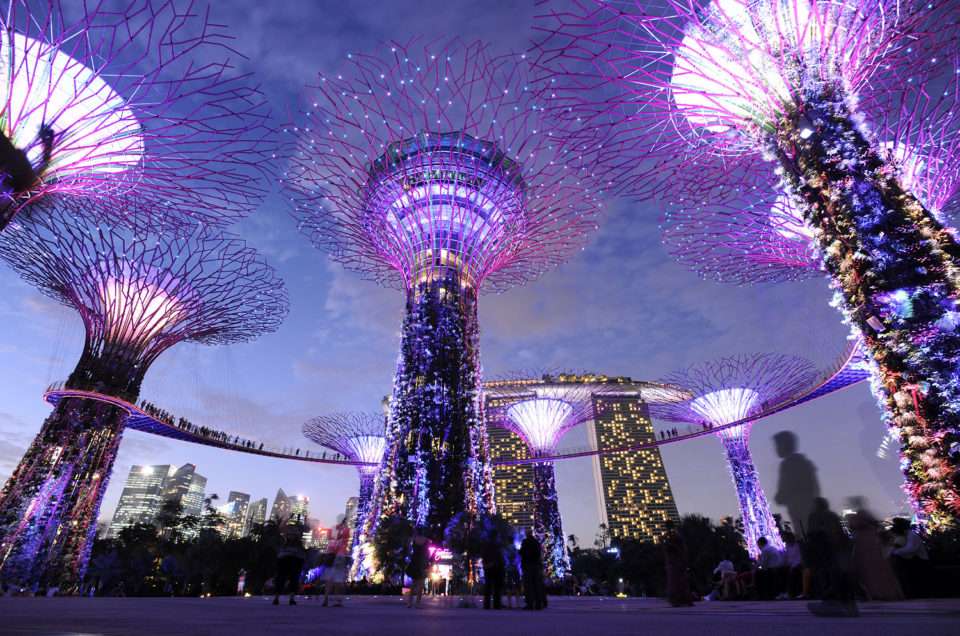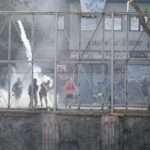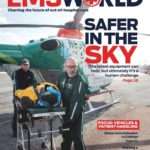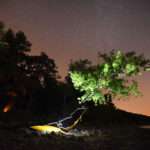When it came time to leave Inle Lake and make the journey to Yangon, we decided to look into flying. Myanmar has a number of airlines that operate in the country; the slow roads and long distances make it an appealing method of travel. When we inquired about flights from Heho, the closest airport, the travel agent looked at us and laughed, only saying “Look on the internet for Heho Airport.” (A plane crashed in December 2012). We decided to hop on the overnight bus that took us back over the winding mountain roads towards the main ‘highway’ heading south to Yangon. While crossing the mountains we saw the effects of clear cutting, watching in amazement at a mile long line of fire working it’s way up an adjacent slope and lighting up the night sky.
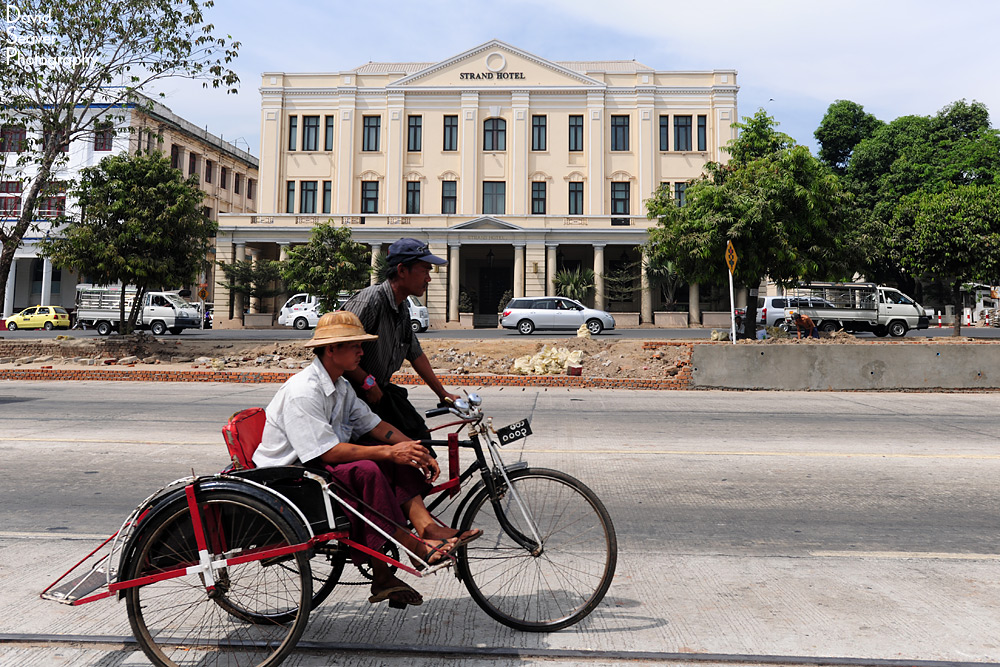 |
| The famous Strand Hotel on Yangon’s waterfront has long been the choice for the well-heeled. |
The bus ended up being better than we expected, probably due to the fancy blue neck pillows with white frills that were provided. After arriving at the bus station in Yangon around 6am, we made our way to the hotel and then set out on foot to explore our neighborhood. Yangon is a large, dirty, bustling, hot, sweaty, mix of people in the true Asia sense. I imagine it’s what Bangkok felt like 30 years ago. New buildings touching their decaying colonial counterparts.
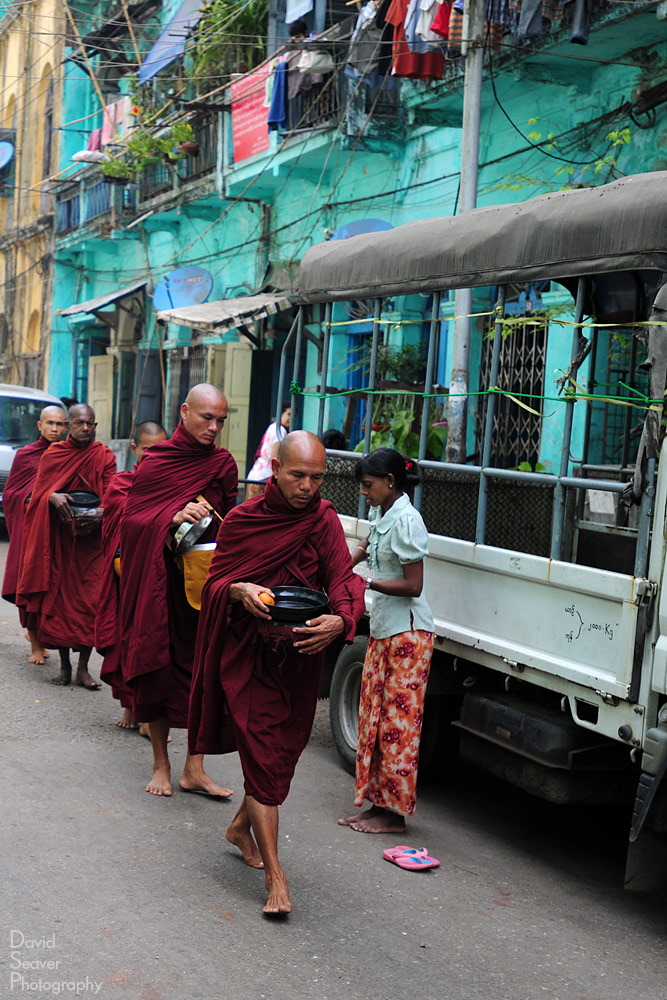 |
| Monks collecting alms, Yangon, Myanmar. |
It’s sometimes the small things that make a place seem foreign. The veins and arteries of Asian cities are filled with motos, surging from street to street, flowing around objects like a river moves around a stone. Motos of all shapes and sizes carry the lives of people in every corner of Asia. Except Yangon. Motorcycles are banned in Yangon (as are horns, but I have no recollection of a quiet city), and have been for quite some time. This however, hasn’t changed the way you cross a street. With motos the technique of choice is the slow and steady shuffle. As long as you make no sudden movements and keep a steady pace, motos will… well, should… flow around you. At times it seems as if you could safely walk blindfolded across a busy street. When cars, trucks, and buses enter the mix, and in Yangon’s case dominate the scene, there is much less flowing going on. It’s more like the people crossing the street flow around the vehicles. The slow shuffle remains, but the delicate art of timing a moving vehicle takes charge. Like Frogger in real life. In my experience the best way to learn the art of crossing a street is to follow a local, preferably an old woman. Clearly they’ve done this before and have an ingrained sense of when to move. Walking out into 4 lanes of moving traffic is not only allowed, it’s the only way to cross the street. Slow and steady, slow and steady.
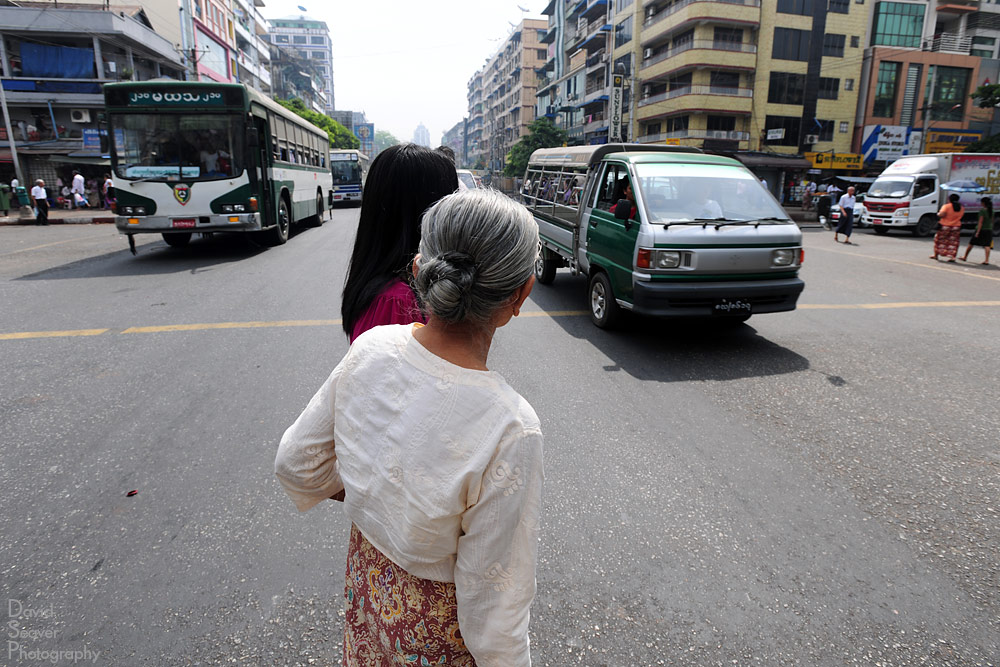 |
| Crossing a street in Yangon, Myanmar. |
 |
| Used books for sale on the street. Yangon, Myanmar. |
Shwedagon Pagoda, is the focal point of Yangon sky line, a giant golden stupa rising from a sea of concrete buildings. The most sacred Buddhist temple in Myanmar draws thousands of people a day to walk around the central golden spire (yes, it’s actually covered in gold), pray at one of the hundreds of Buddha statues, or just watch the scene. We timed it perfectly, arriving just before sunset.
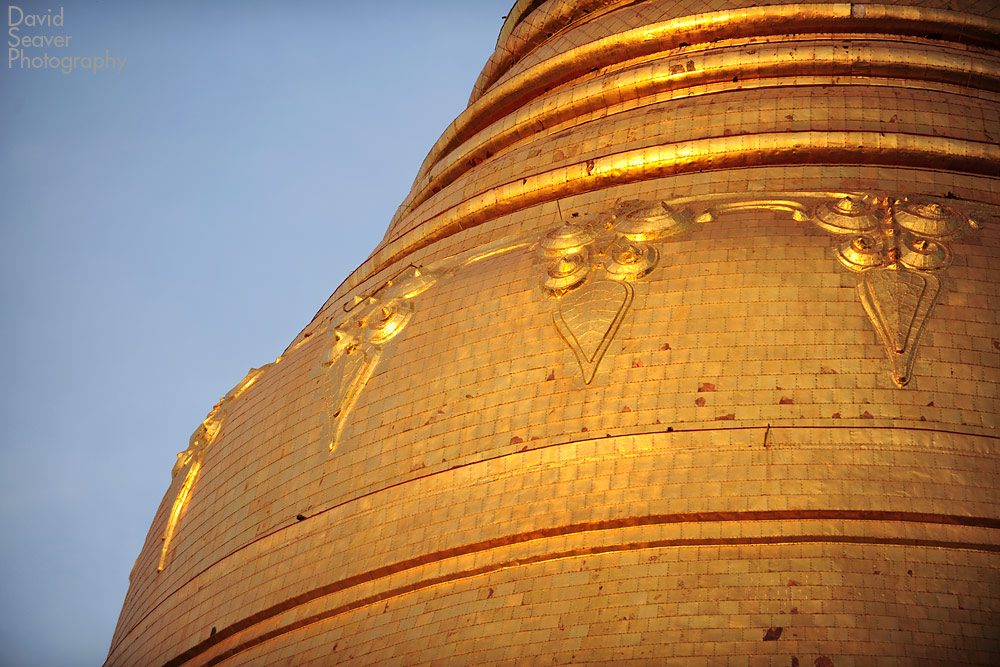 |
| Gold plates cover Shwedagon Pagoda, Yangon, Myanmar. |
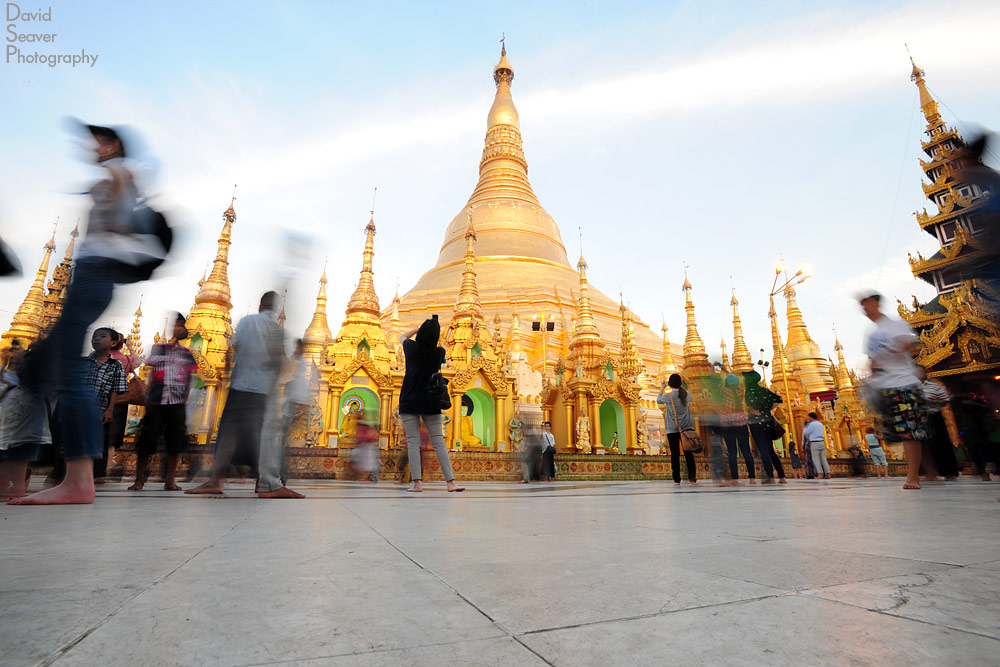 |
| Shwedagon Pagoda, Yangon, Myanmar. |
 |
| A young woman prays, Shwedagon Pagoda, Yangon, Myanmar. |
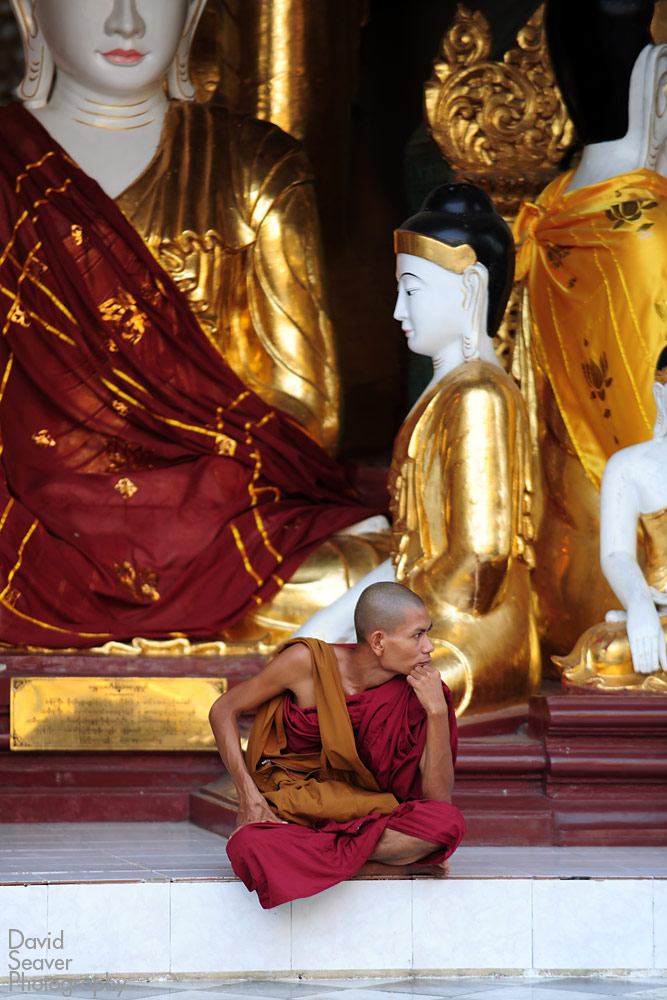 |
| A monk watching the stream of people pass by, Shwedagon Pagoda, Yangon, Myanmar. |
 |
| Golden spires, Shwedagon Pagoda, Yangon, Myanmar. |
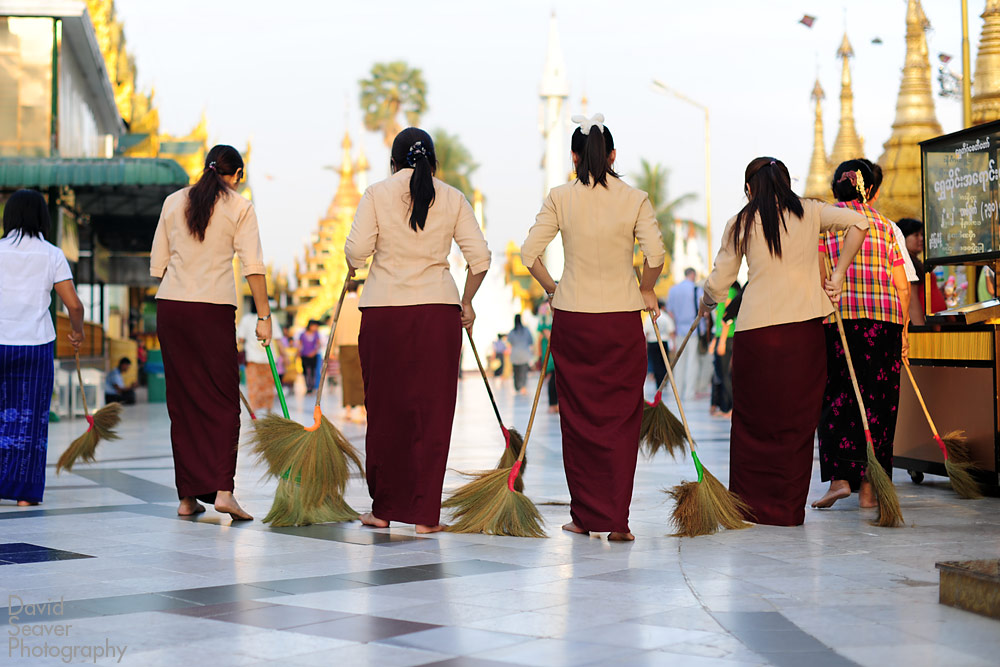 |
| Sweepers making their way around Shwedagon Pagoda, Yangon, Myanmar. |
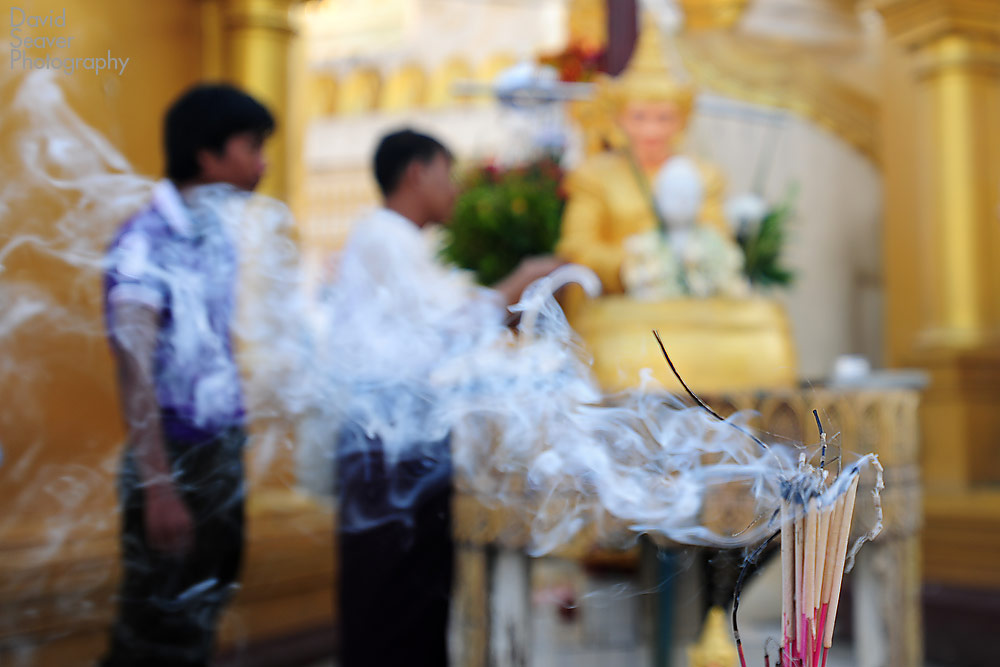 |
| Incense burns at Shwedagon Pagoda, Yangon, Myanmar. |
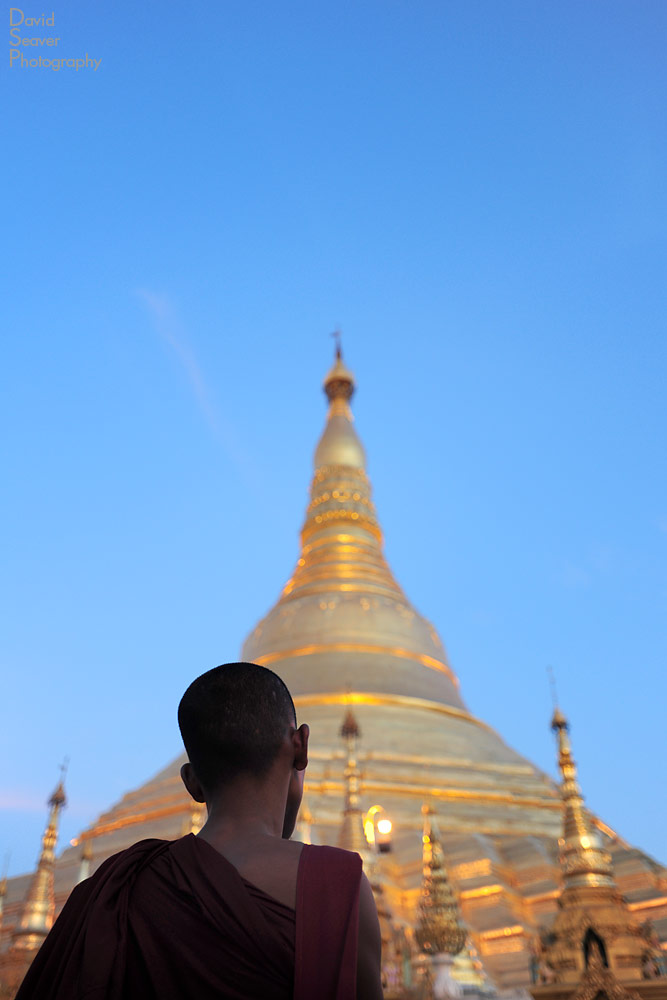 |
| A monk stands in front of Shwedagon Pagoda, Yangon, Myanmar. |
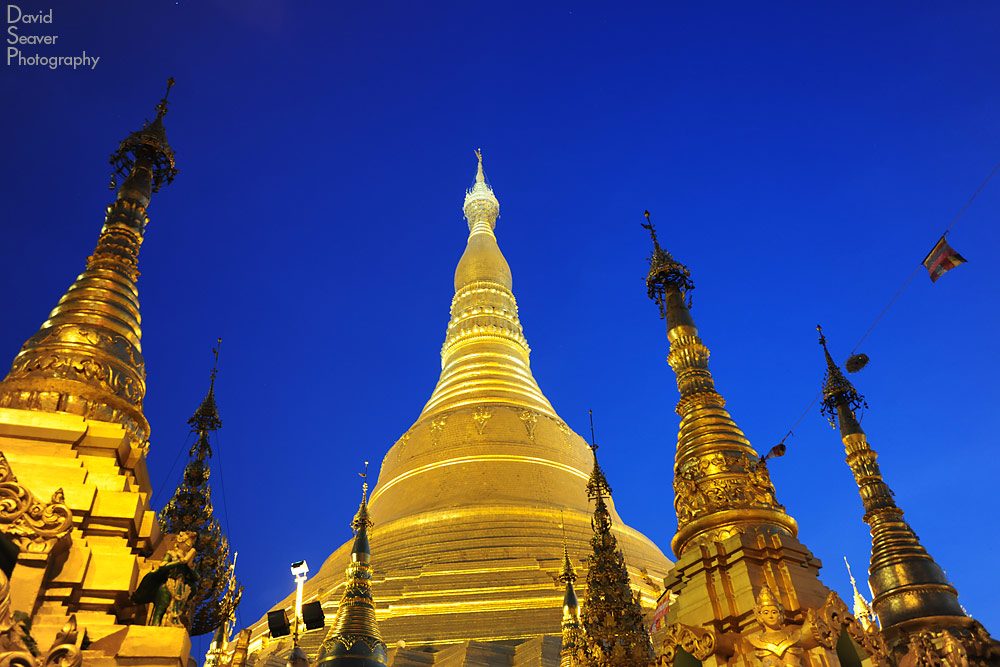 |
| Shwedagon’s golden stupa glows after sunset, Yangon, Myanmar. |
More to come…
Next up – It’s beach time! Ngwe Saung, Myanmar.

